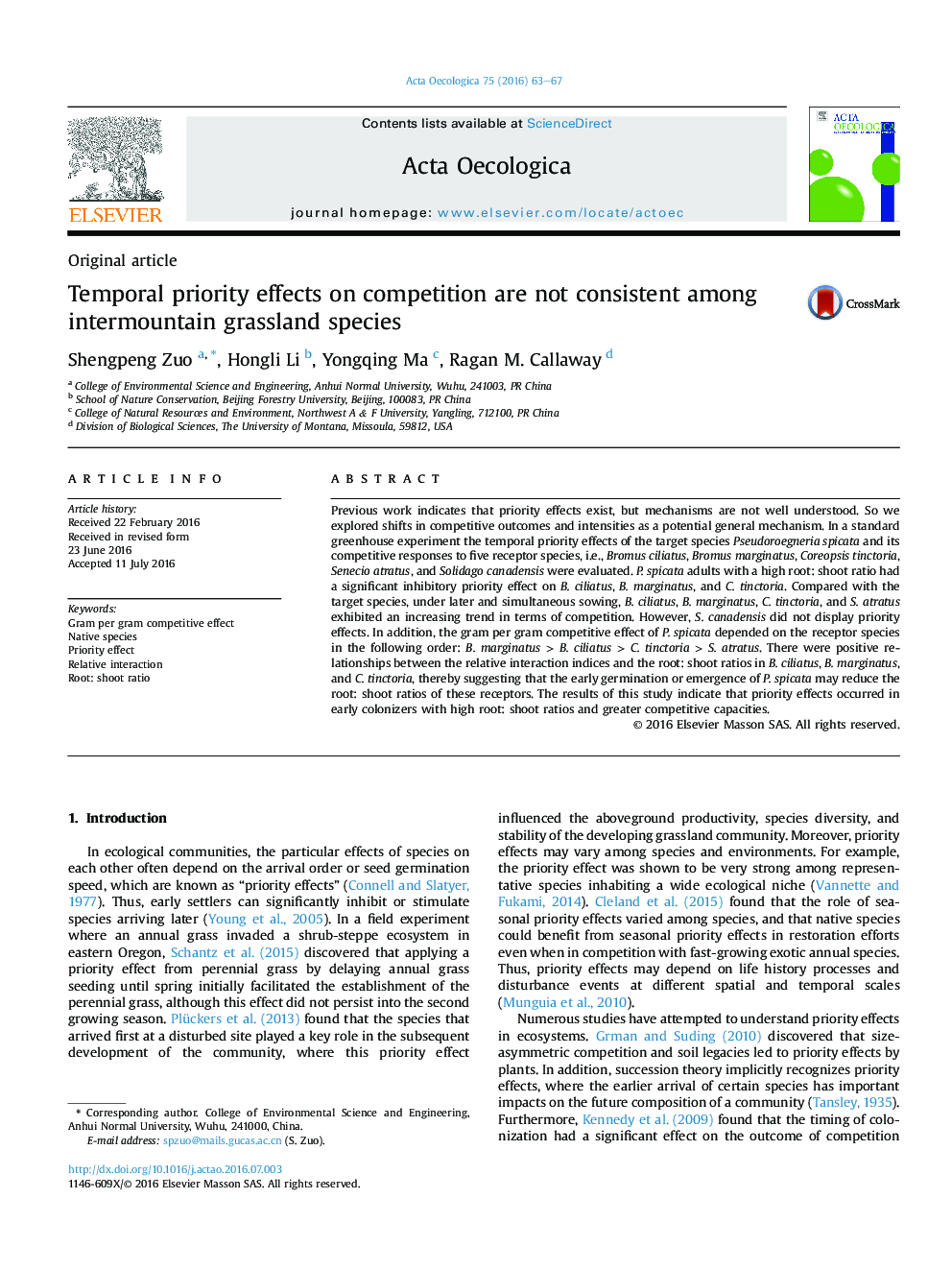| Article ID | Journal | Published Year | Pages | File Type |
|---|---|---|---|---|
| 6297332 | Acta Oecologica | 2016 | 5 Pages |
Abstract
Previous work indicates that priority effects exist, but mechanisms are not well understood. So we explored shifts in competitive outcomes and intensities as a potential general mechanism. In a standard greenhouse experiment the temporal priority effects of the target species Pseudoroegneria spicata and its competitive responses to five receptor species, i.e., Bromus ciliatus, Bromus marginatus, Coreopsis tinctoria, Senecio atratus, and Solidago canadensis were evaluated. P. spicata adults with a high root: shoot ratio had a significant inhibitory priority effect on B. ciliatus, B. marginatus, and C. tinctoria. Compared with the target species, under later and simultaneous sowing, B. ciliatus, B. marginatus, C. tinctoria, and S. atratus exhibited an increasing trend in terms of competition. However, S. canadensis did not display priority effects. In addition, the gram per gram competitive effect of P. spicata depended on the receptor species in the following order: B. marginatus > B. ciliatus > C. tinctoria > S. atratus. There were positive relationships between the relative interaction indices and the root: shoot ratios in B. ciliatus, B. marginatus, and C. tinctoria, thereby suggesting that the early germination or emergence of P. spicata may reduce the root: shoot ratios of these receptors. The results of this study indicate that priority effects occurred in early colonizers with high root: shoot ratios and greater competitive capacities.
Related Topics
Life Sciences
Agricultural and Biological Sciences
Ecology, Evolution, Behavior and Systematics
Authors
Shengpeng Zuo, Hongli Li, Yongqing Ma, Ragan M. Callaway,
